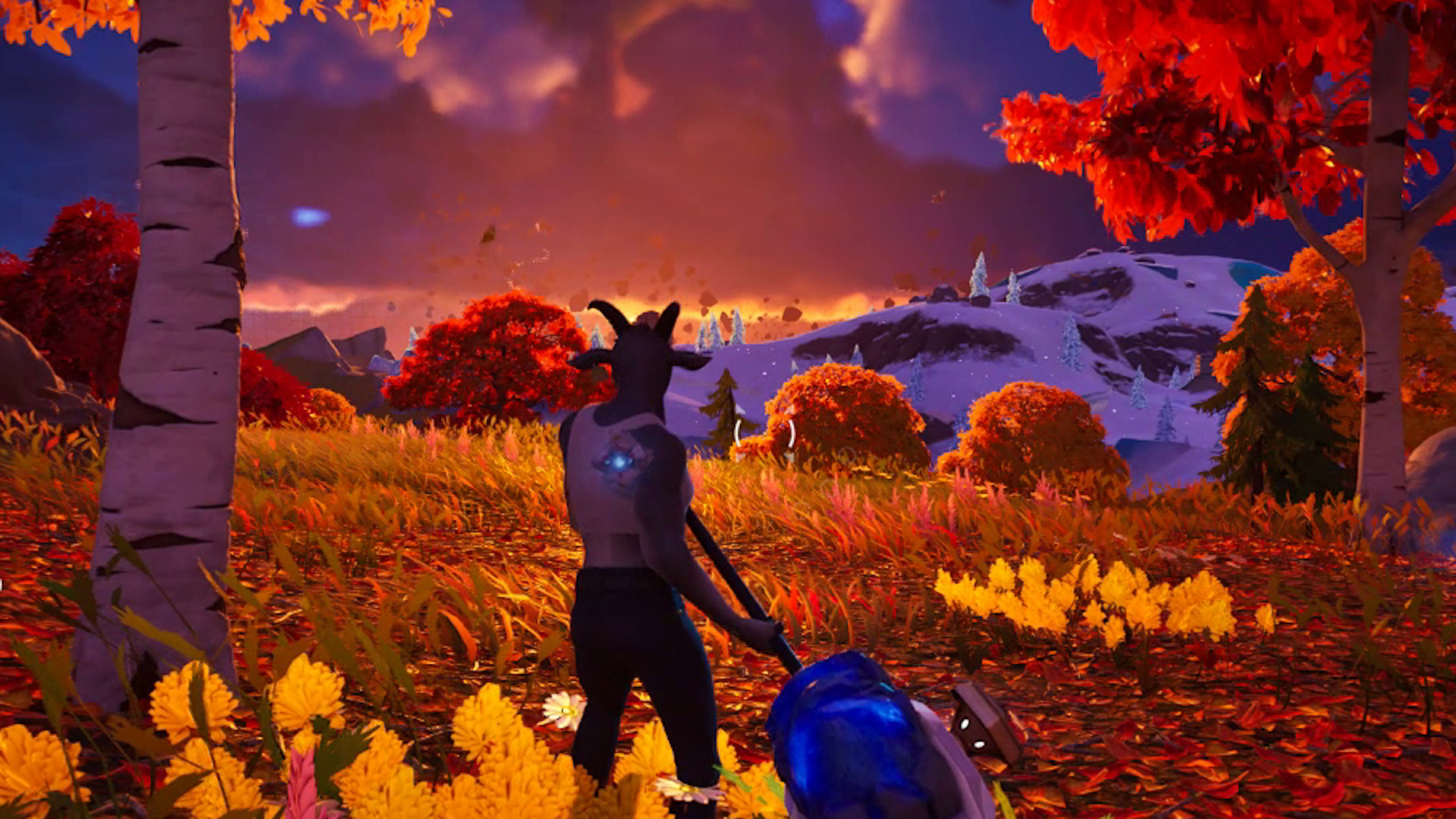Fortnite has become a graphical powerhouse overnight
Epic just injected Fornite with a bunch of Unreal Engine 5's newest graphics tech.

Yesterday, I would have described Fortnite as a reasonably good-looking game that runs on anything. After today's massive Chapter 4 update, I'd describe Fortnite as a graphical showcase that demonstrates just how pretty the next generation of 3D games will look.
Fortnite's all-new, multi-biome map is a wonderland of saturated landscapes that are popping even more since I turned on Epic's proprietary, real-time ray-traced global illumination and reflection options.
That's all thanks to Fortnite Chapter 4's switch to Unreal Engine 5.1, which enables Epic's Nanite "virtualized geometry" technique and Lumen lighting/reflection tech. Epic describes Nanite as a way of improving texture detail (it's one of the things that made that Matrix Awakens PS5 tech demo look so good), but it warns that turning it on can reduce performance in Fortnite.
Once you have Nanite on (find it under the Display tab), a few other key graphical options unlock: Virtual Shadows, Lumen lighting, and Lumen reflections. The dynamic shadows look great with the new map's frequent time-of-day shifts, but I've been mostly enjoying the ray-traced reflections and lighting, especially noticeable in forests and icy areas.
Trees reflected in ice and beautifully lit branches won't look new to PC gamers who've enjoyed ray tracing capable GPUs for the last handful of years, but the neat part of Lumen is that it's hardware agnostic. Those pretty reflections are with hardware ray tracing set to Off. Optionally, you can unleash your RTX card's tensor cores on Lumen to get higher quality results, but this is (again) at risk of lower performance.
Speaking of performance, you're definitely looking at an fps hit if you turn on all the best lighting/reflection options. I'm on an RTX 3060 at 1080p with Lumen reflections and lighting set to the second-highest setting, and I'm averaging around 75 fps. That's with Unreal Engine 5's new Temporal Super Resolution on as well, an upscaling technique that replaces DLSS (side note: Epic has disabled DLSS in Fortnite, but it's temporary). I'm happy with the results for how great the game now looks, but it's not perfect. I'm experiencing some annoying stutters when I load into the pre-game lobby and periodic framerate dips are a slight bother. If I took my Fortnite play seriously I'd probably turn off every bell and whistle that inches me further from a locked 144 fps, but since I don't, the tradeoffs are worth it so far.
That TSR upscaling introduces some graphical weirdness to the first minute or so of a match, too. Characters in motion sometimes leave behind grainy blurs that can get distracting. I noticed this can look especially bad when looking close up at cel-shaded character skins, like this dancing Sasuke Uchiha. It's a ghosting effect similar to what used to happen a lot in older versions of DLSS (and still persists in some games).
Keep up to date with the most important stories and the best deals, as picked by the PC Gamer team.
Some advancements are more impactful than others. Epic also notes that Lumen lighting introduces bouncing, reflective lighting to interiors. I found this feature incredibly impressive when I played Metro Exodus with RTX on, but I'm not seeing a huge difference in Fortnite yet. So far the insides of buildings look about as good as they did before to my eye, which is maybe a testament to Fortnite's strong art direction.
What Fortnite Chapter 4 has done here is unprecedented in the service game age. Fortnite, a game available on everything from mobile phones to the Nintendo Switch, has become a graphical powerhouse with features that Epic is only recommending for PCs with an RTX 2080 or better. We don't typically expect developers to make significant graphical advancements to already-released games, let alone those five years into their lifetime. It shows that Epic is changing Fortnite with the times not only in its gameplay, but its look.
Yeah, I'm totally sold on Lumen and Nanite. Shipping this in a 60 fps large scale multiplayer game...this is nuts. Just amazing work from the team at Epic. pic.twitter.com/VcxfsG2RexDecember 5, 2022
To be clear, this isn't an altruistic update on behalf of Epic. This is the makers of Unreal Engine 5 showing off what its product can do with one of the largest entertainment platforms in the world, with hopes that more and more studios will hitch their wagon to Epic's battle bus. Though, I'm not sure Epic has to do much more convincing, considering all the big games already announced to be making the UE5 jump—Redfall, Stalker 2, Tekken 8, and The Witcher 4 to name a few.
I think several of those games will be a much better showcase for UE5 than Fortnite's cartoony worlds, but Chapter 4 is an impressive debut, and it's cool to get a sneak peek at the tech that some of the biggest games of the near and far future will have access to.

Morgan has been writing for PC Gamer since 2018, first as a freelancer and currently as a staff writer. He has also appeared on Polygon, Kotaku, Fanbyte, and PCGamesN. Before freelancing, he spent most of high school and all of college writing at small gaming sites that didn't pay him. He's very happy to have a real job now. Morgan is a beat writer following the latest and greatest shooters and the communities that play them. He also writes general news, reviews, features, the occasional guide, and bad jokes in Slack. Twist his arm, and he'll even write about a boring strategy game. Please don't, though.

